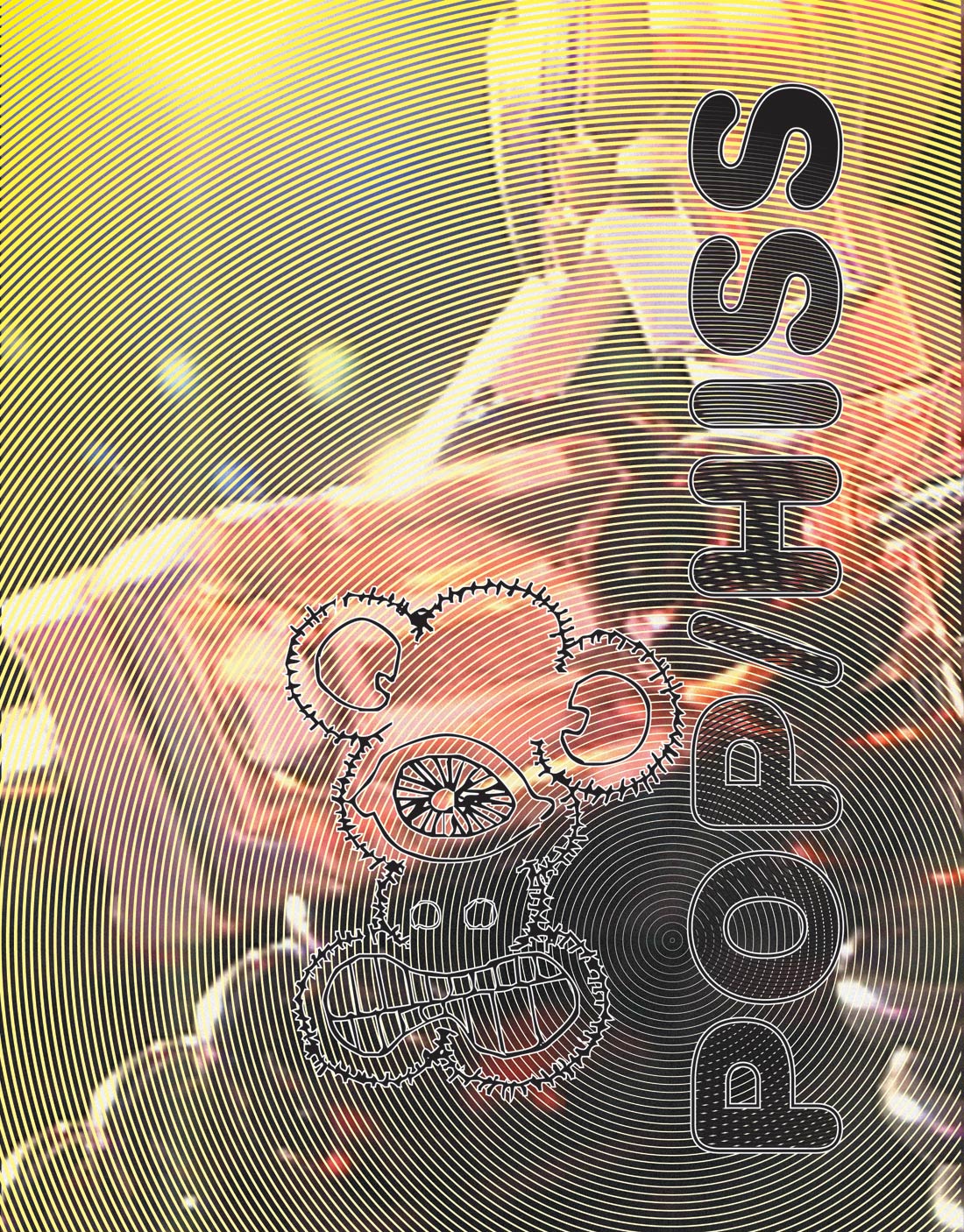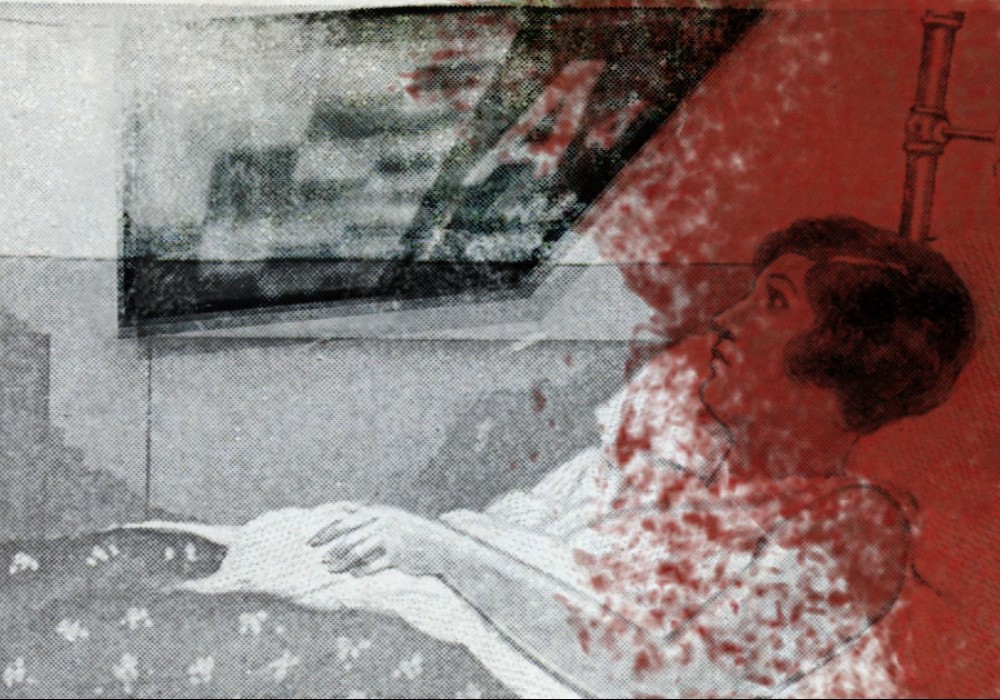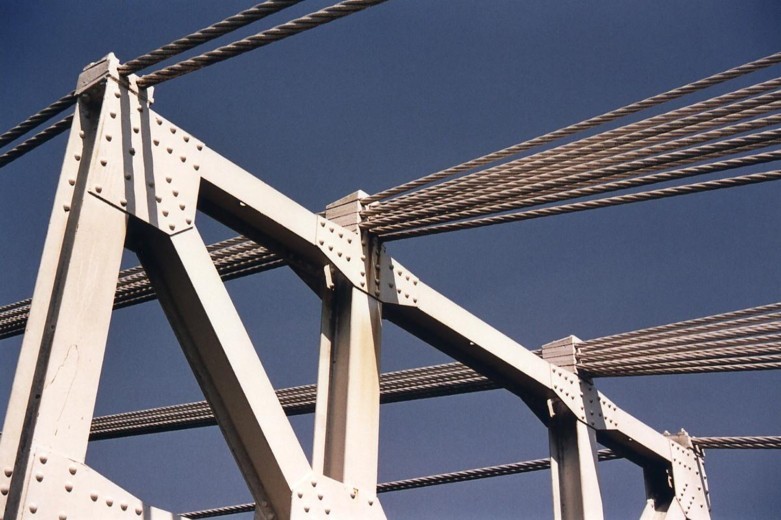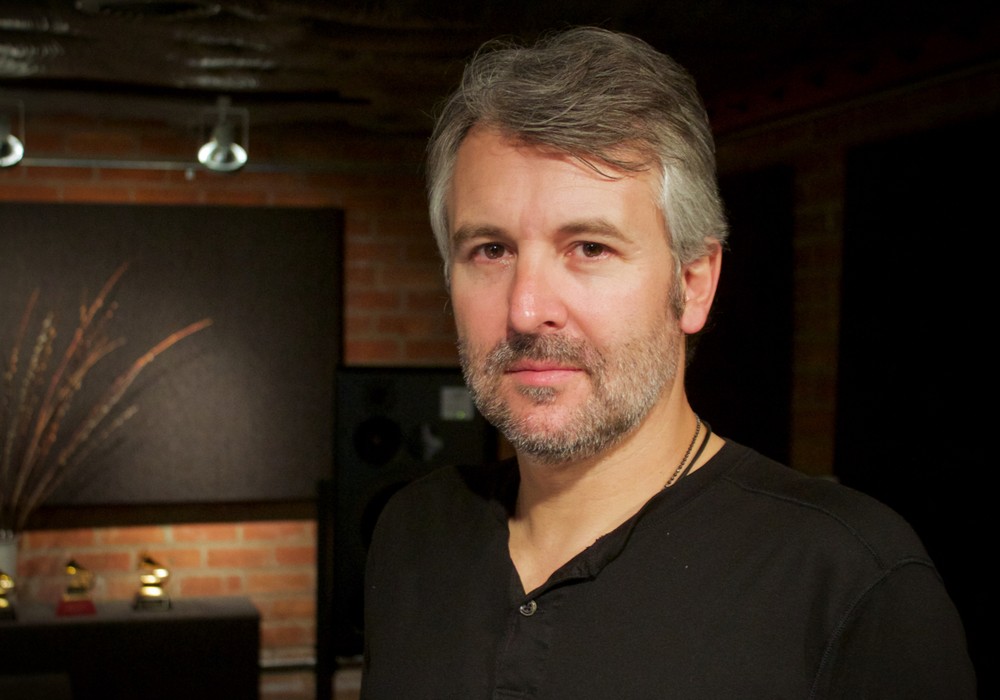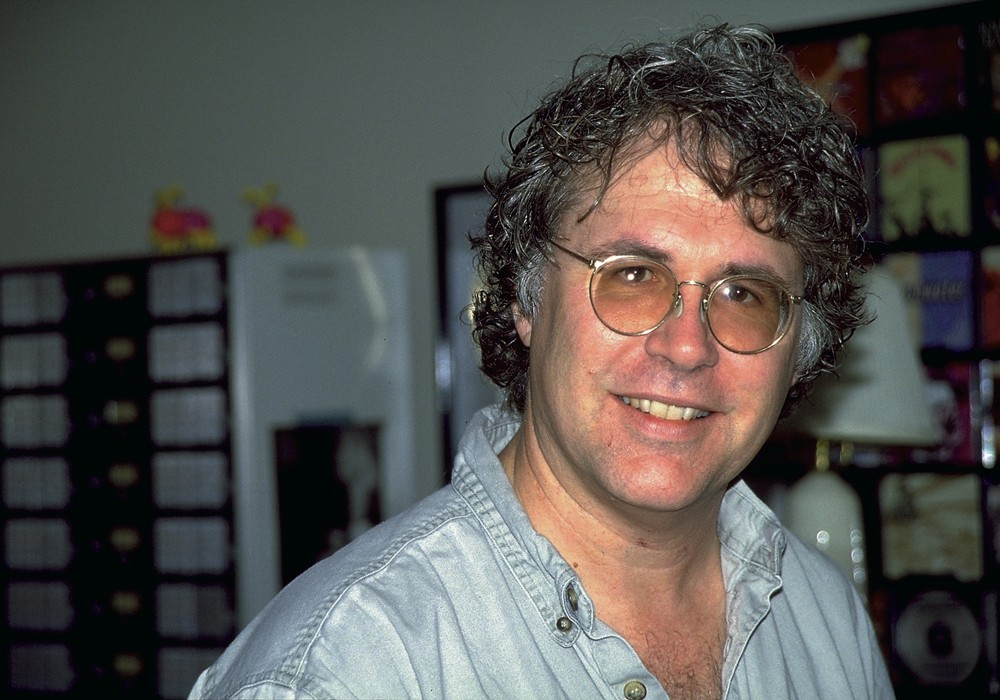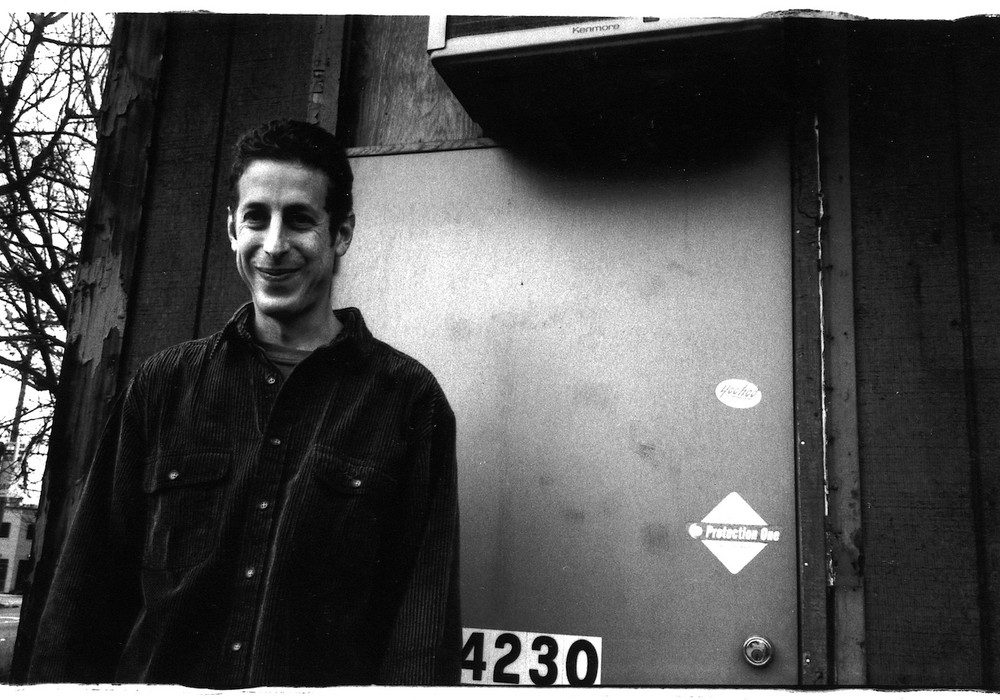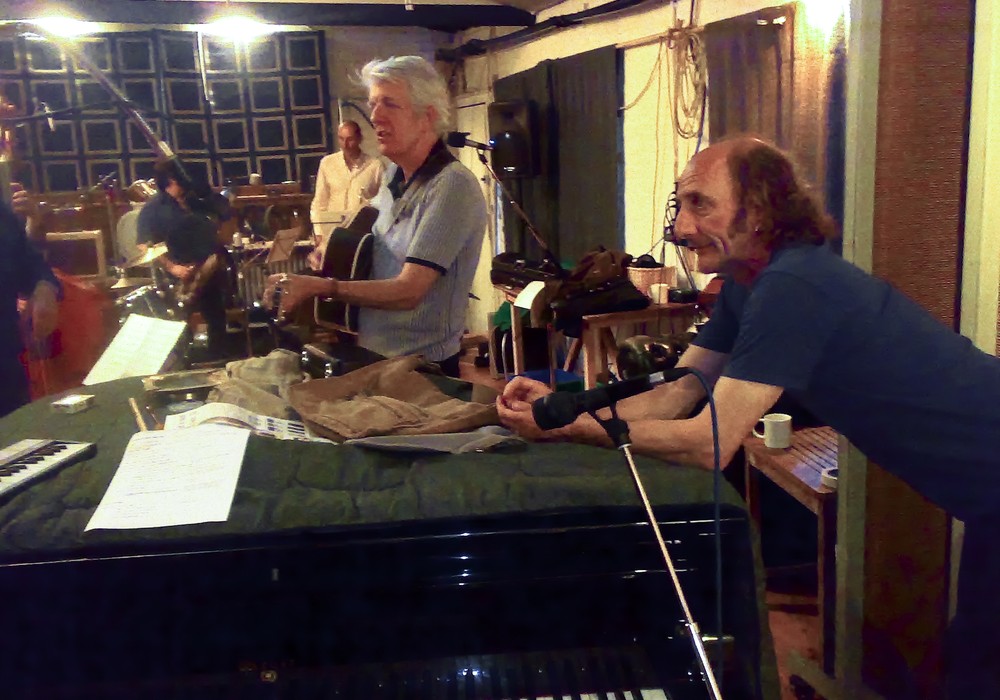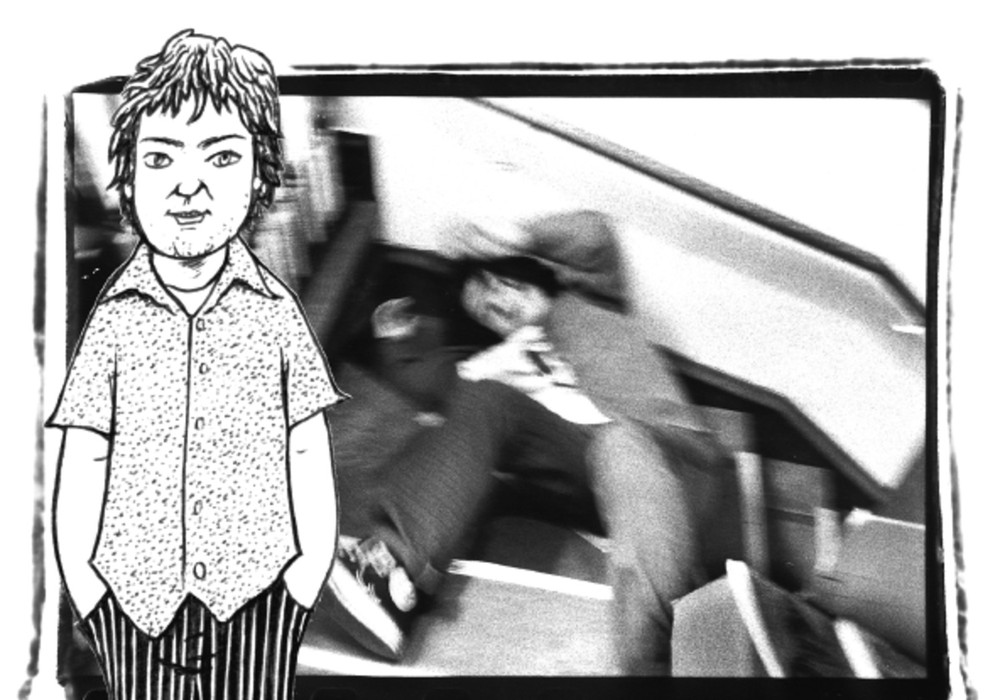FURTHER TUNING NIGHTMARES
Strings are supposed to slide smoothly through the notches in the guitar nut as you turn the tuning keys. With many guitars though, they "stick". You can tell because as you turn the tuning key to sharp the string, the tuner will show no change, and then suddenly you hear a tiny squeak, and now the tuner shows you have overshot the mark and are too sharp. You reverse, and the same thing happens. Sometimes I see people twisting their tuning keys back and forth vigorously, overshooting this way and that until they hit the mark by sheer chance. Later, they go to bend a string, and it immediately goes flat. There's a better way!
If you constantly give a little tug on the string each time you turn the tuning key, you will always "unstick" the string from the slot in the nut...just enough for it to go where it would have gone a minute after you started playing. But tug on the strings too hard and you might find they go sharp later on instead of flat. Learn to do this the right amount and you can tune much more efficiently.
Another factor is how a player squeezes the strings. With tall frets, fretting a string does not necessarily mean a string ever actually touches the wood of the neck. The string will be suspended between the two frets that are on either side of your fingertip. But if you have strong fingers OR light strings, that bit of string is bent downward until it touches the wood. This, of course, pulls the string a bit sharp! Even worse, some people tend to slide the strings sideways a bit, sharping them more. A double-whammy tuning nightmare is when someone sits down and carefully tunes, and then clamps a capo on the guitar neck. These apply some serious pressure to the strings, and it's a safe bet that the guitar will go slightly sharp. Then they try to retune it, but with the capo on. And you thought the strings sticking in the nut were bad enough!
Here's another tip: When you first replace the strings on a stringed instrument, the new strings stretch a bit for the first 20 minutes or so before they settle down. I always tell a band to change their strings the night before coming to the studio. That way, the stretching happens overnight, and when they come in the next day and tune up, the guitars stay in tune better. For the same reason, I also tell drummers the same thing about changing drumheads.
Heavy strings in general are a good thing for tuning. This is because:
- They don't go as sharp when you hit 'em hard.
- Your crappy amateur vibrato (that makes you sound like the lead guitarist for the Scorpions) is harder to do.
- Your undisciplined fingers will have a harder time bending them out of tune.
- They will actually stay in tune longer.
- They will make a fatter, richer sound come out of the pickups.
Result? Everyone will think you are a better player. (Even though you won't be able to play "Eruption" anymore.)
Floating bridges are like the anti-Christ if you are a stickler for tuning. Bend one string sharp, and all the others go flat. If one string goes flat by itself, the act of sharping it back up to correct pitch will cause all the other strings to go flat. Rest your hand on the bridge to mute 'em slightly and go chunk chunk chunk, and they all go very sharp. (You can hear this on many, many, many thrash metal records.) Break one string, and all the others instantly go so massively sharp that you have to stop the song. For solos, it's cool. Dive-bombing, man... zowee. But for actual chords and rhythm playing, this is the closest you can get to a guitar that is actually, literally untunable. (At least, for more than a few seconds at a time.) I will usually wedge something under the bridge to fix it in place long enough for us to cut all the rhythm tracks. I have to be careful what I say, because the good Mr. Floyd Rose lives here in Seattle (and has made some serious bank from his invention), but I thank the Tuning Gods that I don't see these things much anymore.
INTONATION HELL
"Intonation" of stringed instruments is a truly black art, and like tuning, no two people do it the same way, and for the same reasons — they don't know how the instrument is going to be played. When a guitar is not intonated right, a chord will sound good at one point on the neck, but out of tune at another point. The goal of intonation is to make the instrument play "in tune" all the way up the neck, or at least as far as it can be expected to be played (to the 16th fret or so).
I ask people, when possible, to get their guitars "intonated" by an expert before coming to the studio...but far too often, I still have to re-intonate them myself. "Lemme find a screwdriver and an allen wrench...you guys go have a smoke." Sometimes I'm amazed how far off they are...then I remember how badly I used to do it years ago when I thought I knew what I was doing. The process involves moving the bridge saddles back and forth, effectively changing the length of each string until the frets are in the best positions under the string (easier than moving the frets around!), and also adjusting the curvature of the neck with the truss rod (too curved, and you will have to push the strings too far to get to the frets in the middle of the neck, and they'll be sharp) and adjusting the height of the bridge overall (too high and fretted strings go sharp, but with the whole neck, not just the middle — too low, and they buzz and rattle). To do it right, you have to know how hard the guitar is going to be played, and keep in mind that sharp-on-the-initial-attack thing I mentioned in Part One.
Sometimes, you will sadly conclude that the damned frets are simply not in the right places, and you just gotta live with it. You do the best you can, and tell the band to go forth and rock. Probably no one will ever hear it but you.
Guitars have other problems. I've found that with some guitars, the nut is too tall. This means that as you get closer to the nut, you have to press harder to bend the string down toward the fret...just the opposite of what you'd expect. This means that any note played on the first fret will be very sharp. Check this on a precise tuner and you will be very, very scared. A "zero fret," like some Gretsches have, was one designer's solution. A currently hyped, copyrighted/patented new "tuning system" (which will remain nameless here) has as one of its components the slight adjustment of the position of the nut to move it a bit closer to the first fret. It's a fudge, but it can compensate somewhat for the problem.
MORE MATH: THERE WILL BE A QUIZ IN THE MORNING
I've got to get back to physics and theory again to deal with the last of the tuning bogeys which bedevil our studio lives (if "studio lives" is not an oxymoron). Every few years, Guitar Player magazine reprints an article entitled "The Harmonic Tuning Myth." I saved it last time I saw it, and wave it at people occasionally.
You've seen the method: Someone will tune their low E or A string, either with a tuner or with that old standard, a Tuning Fork. Then they will lightly chime the 4th harmonic (above the 5th fret) and compare that note with the 3rd harmonic (above the 7th fret) on the next string up. These are thought to be the same note. The problem is, they're not exactly. To explain why means we must delve into the "equal-tempered scale", but the essence of it is that if you tune your guitar this way, an additive error is introduced with each string. By the time you get to the high E string, you are no longer quite in tune with the low E string. Nonetheless this method is close enough to get the tuning in the ballpark...but not close enough for the studio, sorry.
BRUTE-FORCE EXPLANATION OF EQUAL-TEMPERAMENT:
1) Two different notes sound "good" together only if their frequencies are simple integer fractional multiples (see sidebar) of each other. In other words, the ratio of the two notes' frequencies (Hz) must be reducable to a fraction with simple integers.
2) "Chords" represent stacked ratios of these wavelengths — seven wavelengths of a higher note in the chord will equal five wavelengths of the next one down, or four wavelengths of the lowest note. The notes are all "in tune" with each other when these ratios are exact.
3) The western musical scale is made of twelve notes per octave that are equally spaced apart. This allows you to play in any key without having to stop and adjust your tuning for each key (this will become clearer in a moment). Each of the twelve notes is about 5.946% higher in frequency than the one directly below it. If you take A 440, and multiply it by exactly 1.05946 (i.e. raise it by 5.946%), you get the frequency of A sharp, which is 466.162 Hz. Multiply that again by 1.05946 eleven more times, and you reach 880 Hz — the A an octave higher.
In the studio, where sometimes you have to change tape speeds for tuning purposes, you can remember it as "6% speed change equals one half-step" (or one fret on the guitar). Six percent is ballpark...then fine tune by ear. (Also...each of the 12 notes is divided into 100 tiny intervals called "cents". So, one "cent" is about .06%. Just so ya know.)
So far so good? Get out your old TI calculator and try multiplying anything by 1.05946, 12 times, and watch the number end up doubled. It happens that 1.05946 is the twelfth root of two.
This evil number, which we are stuck with, has caused tuning nightmares for entire civilizations.
APPLYING THIS TO THE CHAOS OF REAL LIFE
The G (and B) string drives people crazy on the guitar. They tune it, then play a C chord or A minor chord, but the G string sounds wrong. Fuzz and distortion makes the wrongness even more apparent. So they tune the G string by ear so that chord is in tune... and then all the other chords sound wrong. Way down there at the first fret, all your intonation acrobatics (which mostly affect the other end of the string!) will be of little use, so what do you do? Sigh wearily... and look for another guitar, which might fix the problem... sorta.
The explanation won't make you happy. In the "first position," meaning for chord shapes that are mostly on the first couple frets on the guitar, the G string is often used for the upper part of a musical interval called a "third," either major or minor third. (This musical notation is not to be confused with "third harmonics" — it's a totally different thing.) In an ideal world, a "major third" is two notes (a "diad") whose frequencies are in a ratio of 5 to 4, or 1.25, while a "minor third" is in a ratio of 6 to 5, or 1.2. If those ratios are true, these diads (note pairs) sound wonderfully in tune and harmonious.
Here's where it gets hairy. In our 12-tone scale, where all the notes are equally spaced, no pair of them are exactly in a 1.2 or 1.25 ratio. If you pull out your calculator and multiply 1.05946 by itself a few times, you'll land on 1.189, and next, 1.2599! The first one is actually 15 cents flat from where your ears will want a minor third to be, and the second is 14 cents sharp from where a major third should be! So if you tune a chord "by ear" that includes a major third, that same chord with a minor third substituted in it will be 29 cents out of tune...almost a third of a half-step. (Cue: wailing and gnashing of teeth.)
For comparison, a "fourth," the frequency span between E and A, should be (from A down to E) in a ratio of 4 to 3, or 1.3333...but in our western scale, it lands on 1.3348. Damn close...but still 2 cents sharp. A "fifth" (E to B, the ultimate punk rock interval — one string over, 2 frets up) should be 3 to 2, or 1.5000, but it lands on 1.4983 in our scale...2 cents flat. (Close enough, I admit, for rock and roll.)
But, pile on a bunch of fuzz/distortion (which nakedly reveals tuning problems) and place those "third" notes right on the first fret of the guitar, and you have the ultimate homicidal-suicidal tuning nightmare. And there's little you can do about it. When a musician with a song including lots of first position complex chords notices this problem, they (and you) can go nuts trying to get the guitar in tune. There are actually chord progressions that simply cannot be played completely in tune on some guitars, period — you will have to tune by ear for part of the chord progression, record, then retune for the other part of the chord progression, and punch all those parts in...with very fast fingers. Or get another guitar...and hope!
You can try to suggest transposing the chord to some other part of the neck. Sometimes it works, if you can convince the musician. I had one client with a beat-to-hell Strat and a song with a first-position chord sequence that could not be tuned. No way, no how. We almost went insane, because he WOULD not use another guitar. It was a simple song, yet we spent a whole day trying to get a track done that did not sound horribly sour.
What could I do? Nothing...except try to learn why. That started me on the journey which led to this article. Thanks for reading, and good luck in the future...with all those keyboards, loops and samples! Hey, electric guitar's not dead, it just smells funny...
Post Script: I encourage the reader to go forth and do some research on the nature of our 12-toned equal-tempered scale. I did, and the scales fell from my eyes (sorry). Suffice it to say that I am so confident now of my guitar-tuning abilities that I actually commissioned a luthier to custom-build me an electric guitar fretted to play a 19-tones-per-octave musical scale...and I can actually get it in tune for minutes at a time, though just how the hell to do this (and why) is a subject for another time!
